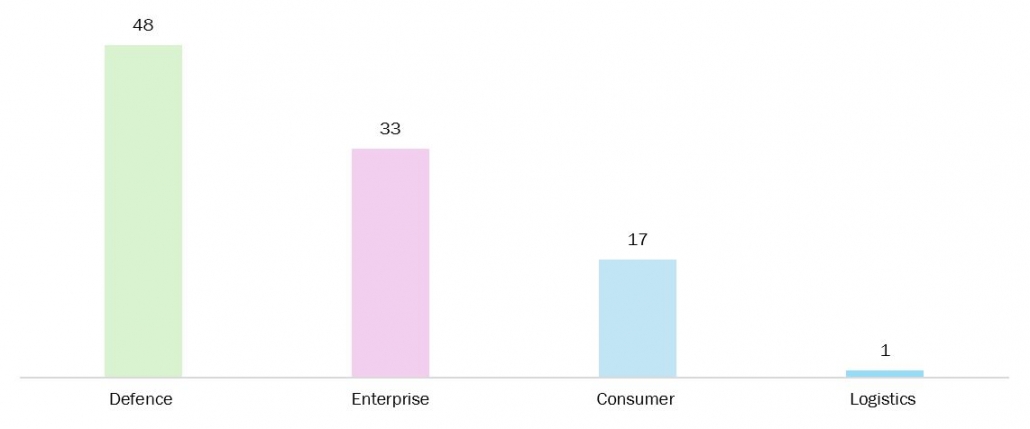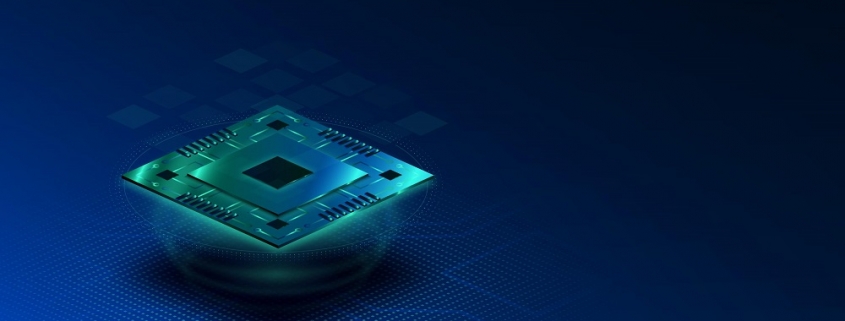The Unseen Influence of Photoelectric Sensors in Daily Existence
The photoelectric sensors, which are also known as optical sensors, work on the basis of light beams that are used to detect the possible presence or the absence of an object or the case of conditions of surfaces that have changed. They are composed of a transmitter and a sensor. A receiver recognizes the reflected light from the object. The sensors are mostly present in industrial manufacturing environments. Photoelectric sensors are different from light barriers because they perceive obstacles not by detecting when light beams are blocked but by detecting light reflecting off the obstacle. They are versatile and are usually effective in spotting different materials and objects, making the system independent of the colour or appearance of the target object.
The photoelectric sensors are classified into Thru-beam, Retroreflective, and Diffused. These sensors have both visible and infrared light sources for converting analog or digital signals into an output. In case of a thru-beam sensor, however, the transmitter and receiver are positioned at an angle to one another, within the line of sight, whereas the detection process is initiated whenever an object breaks through the beam.
Global Production Trends
The global production phenomenon appears to be influenced by a set of major trends. The increased adoption of automation in a broad range of sectors, for example the food & beverage, automotive, and construction ones is an important one. With these robotic operations, photoelectric sensors play a critical role to the achievement of precision and dependability in tasks like the determination of objects, positioning of products, as well as the provision of safety measures.
In the same manner, the Asia-Pacific region is expected to witness the highest growth rate because of the blossoming of its manufacturing industry and the increasing use of Industrial Internet of Things (IIoT) technology. For instance, according to The State Council Information Office China published an article in March 2023 it states that with an estimated total value-added industrial production volume of about 40 trillion yuan (equal to 5.57 trillion U.S. dollars) in 2023, the industrial value-added, at around 31.7 percent of GDP, accounted for this share. Its manufacturing sector has been a leader among all countries for more than 14 years in a row and keeps on maintaining its position as the biggest of all.
Furthermore, the progress in the sensors family leads to the production of smaller, more flexible, and even cost-effective types of sensors that make them cheaper and more accessible for various applications. Such sensors with a range of 100 to 1 thousand millimeters that provide an inexpensive detecting platform for different materials and can be broadly used for both short and long-range applications are another trend that has come to the fore. Although environmental considerations are a challenge to various industries, some of them solve this by creating eco-friendly PVC packing straps made of recycled kinds of stuff or organic alternatives.
The Photoelectric Use Cases
Photo-electric sensors are very common because of their role in detecting objects with the help of light in different industries. In manufacturing, they are significant since they provide the automation basis and guarantee the right detection and positioning of objects on assembly lines. These sensors are employed for applications including the activation of robots to undertake pick and place operations, confirmation of product presence for quality management, and worker safety by sensing joint presence in dangerous zones. The food and beverage industry depends on photoelectric sensors to make sure that the right liquid level is maintained in containers, check the conveyor belts, and start packaging processes.
The pharmaceutical industry makes use of this sensor in some basic functions like pill counting and confirming the presence of the label on medication bottles. Moreover, apart from industrial use, photoelectric sensors have a significant role in the daily life of all human beings. They are programmed in automatic doors to switch on the light when there is motion and they cause the escalator to stop when somebody is on one of the steps. They serve the purpose of safety. Security systems also provide the function of photoelectric sensors in detecting movement and triggering alarms accordingly.
In addition to this, even the daily-used electronic products such as printers and automated faucets, have these sensors embedded in them for different purposes. Since sensor technology evolves all the time, becoming more miniature, multi-functional, and affordable, the scope of optoelectronic sensors’ usage keeps growing. This implies that they will stay leading players in the automation, safety, and efficiency fields which come up in various industries and applications.
Market Dynamics and Drivers
The market for photoelectric sensors has the remarkable market growth due to several factors being positioned. The main reason is that there is a growing automation phenomenon manufacturing, automobile, food and drink as well as construction among other sectors. They heavily use photoelectric sensors for tasks like object recognition, product numbering and guaranteed safety measures on auto-production machines. The highly accurate sensors in use here are vital for ensuring smooth operations and better efficiency, and the fact that these sensors make use of light is the key factor in this regard.
Fast growing Asia-Pacific region that its manufacturing sector was accompanied. This area of high IIoT (Industrial Internet of Things) applications is one such region, which is driving this requirement for more photoelectric sensors. IIoT integrations yield real-time data charts from those sensors, thus creating opportunities for better process optimization and remote monitoring capabilities.
In addition, sensor technology is progressing rapidly causing the exploration of smaller, more versatile, and cost-efficient photodiodes. The much larger variety of applications and the ability to address different budgets will make the technology more appealing to users. One trend that has come up in recent years is the use of sensors that can be adjusted from 100mm to 1000mm which presents a cost-effective range to object detection in different materials and is applicable for both short and long-range applications. For instance, in January 2023, the most recent Consumer Electronics Show (CES) in 2023 drew focus to the progress on optical and photonic sensor technologies. They are based on light and this makes them revolutionary for navigation, positioning and autonomy. A great demonstration at the conference showed how a mini gyroscope took advantage of the latest technology and was used for high-precision positioning in self-driving cars and drones.
The booming drone market, composed of segments that include military, commercial, and consumer, highly relies on such imaging sensors. These sensors have the ability of notably giving drones visual perception that helps them in tasks such as avoiding obstacles, distinguishing objects (important in mapping and delivery) and autonomously flying safely. Thus, cost-effectiveness and safety play a role as the more drones fly, the larger the segments of drones will be. For instance, according to Idea Forge Technology’s published article in June 2023 its states that defense was the biggest shareholder in the global drone market in the calendar year 2022 and got 48%. Concluding the consumption defense, enterprise accounted for 33%, consumer for 17%, and less than 1% for logistics.
FIGURE 1: Global drone market by segmentation in percentage (2022)

Source: https://ideaforgetech.com/uploads/Other/DroneIndustryReport.pdf
Challenges and Constraints
The photoelectric sensors have got a strong hand in many applications. However, it has some challenges. Their performance in large-scale scenarios, however, can be restricted by their relatively narrow detection area. Besides that, environmental factors such as smoke, dust or intense sunlight can interfere with their capacity to identify light and therefore provoke malfunctions. Additionally, the image of hype details which includes colours that match the object of the target is another reason for confusion for the sensor. Once again, the last part is difficult, because it requires specialized technical know-how to set up the optimum measurement parameters for each and every scenario.
Emerging Opportunities and Innovations
The applications of photoelectric sensors are vast, owing to the fact that technology development is promoting more miniaturized and inconspicuous sensors that can be comfortably housed in tiny devices. Through integrating a LiDAR technology, explores the fascinating prospects related to 3D object recognition and mapping using light detection and ranging. Nevertheless, scientists are investigating whether machines should have self-learning algorithms that would allow sensors to adjust to environmental complexity and continuous changes, hence improving reliability. Recent prototyping of bionic sensors that can identify a broader range of the light spectrum makes us optimistic about the possibility of outsmarting the current sensors and their shortcomings. These cool innovative advancements of the photoelectric sensors give room for automation, control, safety and data collection in each related industry.
Key Developments
- In November 2023: Carlo Gavazzi launched a photoelectric laser sensor with IO-Link provides nanometer precision level together with IO-Link communication for application addressed quite challengingly. These sensors are built to be able to excel in harsh environments, with functions such as far-reaching detection, background suppression, and controllability that make them capable of executing finely detailed tasks through IO-Link.
At last, concluding the photoelectric market is expected to have several innovations and growth opportunities over the forecast period. The market is driven by increased automation in the manufacturing sector and evolving landscape of advanced technology drive the photoelectric sensors market globally. There are various challenges to be faced such as narrow detection features and the image of hyper details which includes colors that match the object of the target is another reason for confusion for the sensors that may curb the market growth. Therefore, the industry is expected to maximize technological advancements and innovations to meet the needs of growing global demand for photoelectric sensors.
| Subscribe Us |



